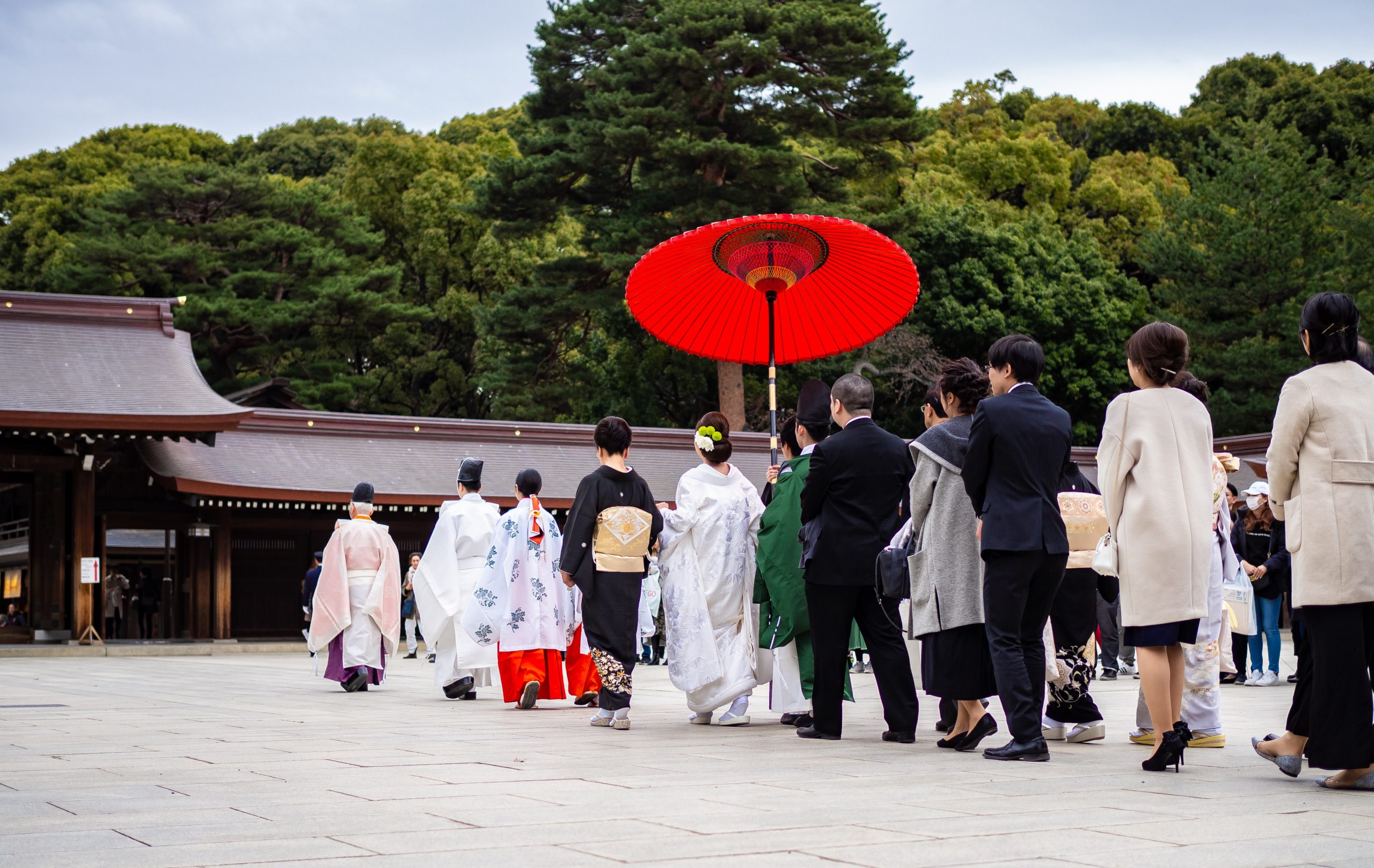There are basically two types of wedding ceremony in Japan: western style and Japanese traditional style. The wedding ceremony and being legally married are two separate things in Japan. In order to be legally married, you need to register with the city or municipal office, and you can have a wedding ceremony before or after registering as a married couple. Today, most of Japanese couples have a wedding ceremony in the western way, but still Japan has unique way to celebrate the marriage. Here we introduce the wedding ceremonies in Japan including the explanation of the traditional way of wedding with beautiful kimonos!
Styles of wedding ceremony
There are basically two types of wedding ceremonies in Japan: western style and Japanese traditional style called “Shinzen Shiki”. The western style is usually held at a Christian church or wedding hall and Japanese traditional style is normally held at a Shinto shrine or Buddhist temple.
The western style wedding ceremony is conducted by a minister or priest. In Japan, you don’t have to believe in the Christian faith to have a wedding ceremony at a Christian church. Many people choose to have a wedding ceremony at a Christian church because it is fashionable and many brides want to wear a white wedding dress for the ceremony.
Most of the Japanese traditional wedding ceremony is held at a Shinto shrine performed by a Shinto priest. In the past, only close family members and matchmakers called nakodo attended the wedding ceremony. However, today this tradition has been changing. Many couples do not have matchmakers and there are some shrines that allow distant family members and friends of the bride and groom to attend the ceremony although the number of the guests is still limited to be small in order to keep the ceremony private.
The traditional wedding procedure can differ depending on the Shinto shrine. Generally, a Shinto wedding ceremony starts with the purification, and the priest offering prayers to the gods. The bride and groom share three nuptial cups of sake. This is called “san-san-kudo”. The bride and groom take three sips of sake from the small, medium, and large cups.
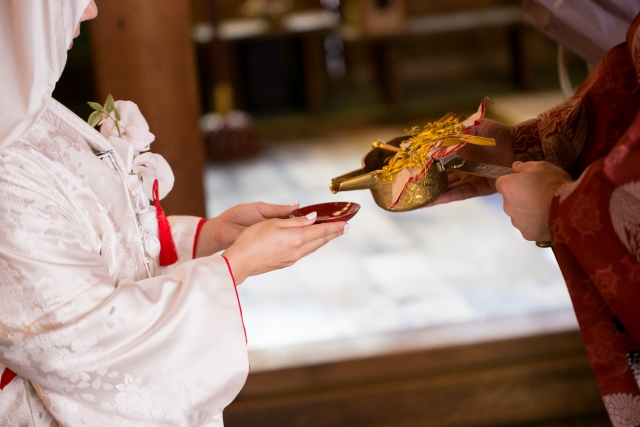
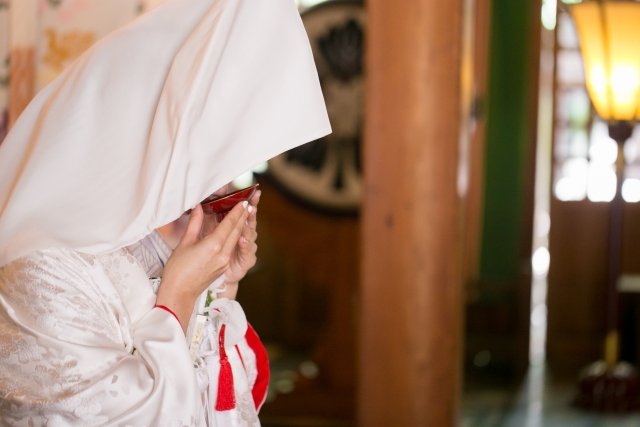
And then the groom reads words of commitment, and then The ceremony ends with symbolic offerings to the gods. Many couples now exchange wedding rings, which is one of the new traditions borrowed from the West.
Wedding parties
After the wedding ceremony, the bride and groom welcome more guests to the reception party. The party usually takes place at a restaurant or a banquet room in the hotel. The number of guests range from about 10 to over 100 among whom are relatives, friends, co-workers and bosses of the bride and groom. The party normally starts with the introductions of the bride and groom and lasts for about 2 to 2.5 hours.
The bride and groom seat at the head tables to be the center of attention. During the ceremony, a meal is served and several guests make contributions such as speeches, songs and other performances.
One of the highlights of the ceremony is the ritual of cake cutting, which is borrowed from western custom. At the very end of the party, the couple will make a speech to all the guests and thank everybody.
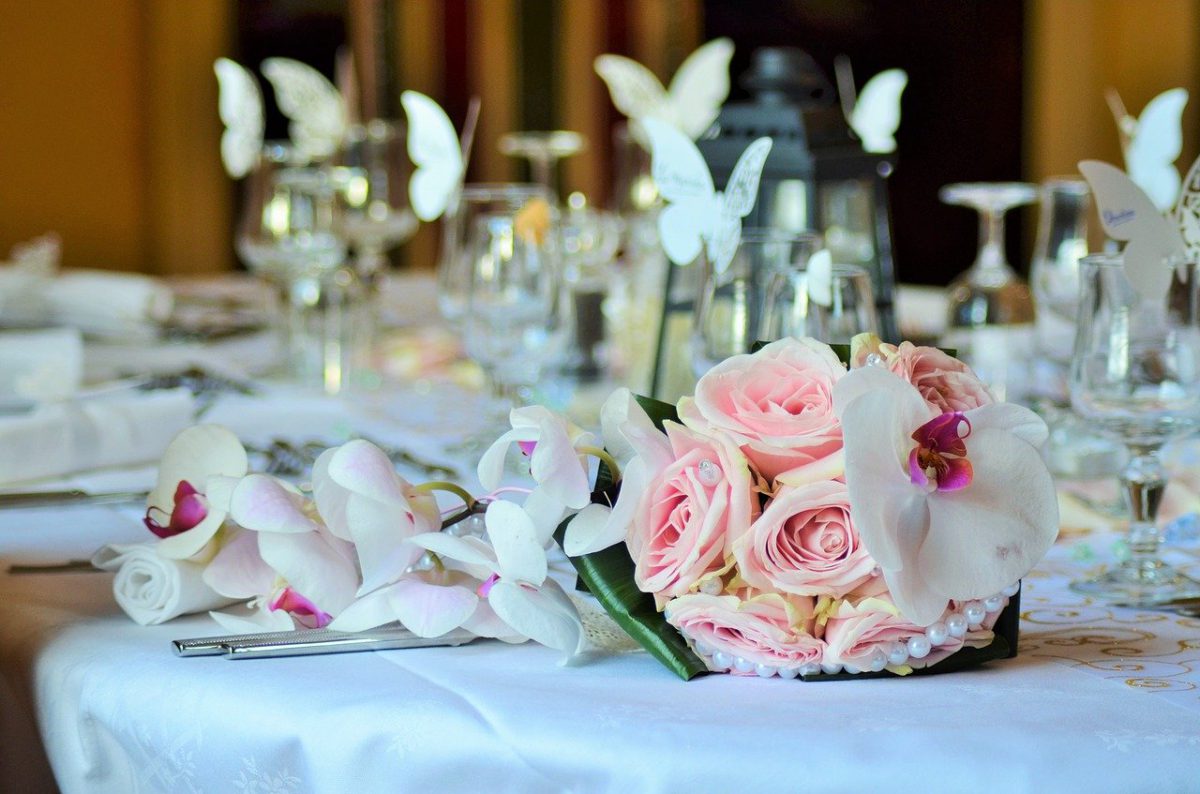
What to wear for the bride, groom, and guests
At a traditional Japanese wedding, the bride and groom usually wear Japanese wedding kimono. The bride wears a white wedding kimono called “shiromuku” with a white headdress. It symbolizes purity and that the bride will become the color of her husband’s family. As for the term “become the color of her husband’s family’, in Japan, keeping the last name on the both side is not legally accepted and still most of people change the last name of the bride to the groom’s when they get married. From that reason, traditionally people think that a bride become a new part of the groom’s family.
There are two types of headdresses for the bride and she can choose either one for her wedding. One is called “wataboshi”. Originally worn outdoors to keep away dust and prevent from the cold, the wataboshi now is worn as the equivalent of the bridal veil in Western tradition. Wearing the wataboshi hides the bride’s face from all others except for the groom until the end of the wedding ceremony.
Another type of headdress is “tsunokakushi”. The Japanese term literally means “to hide horns”. The idea of horns comes from the folk belief that women grow horns and turn into a demon when they get jealous. Funny enough, tsunokakushi means the protection from a wife to be a demon!
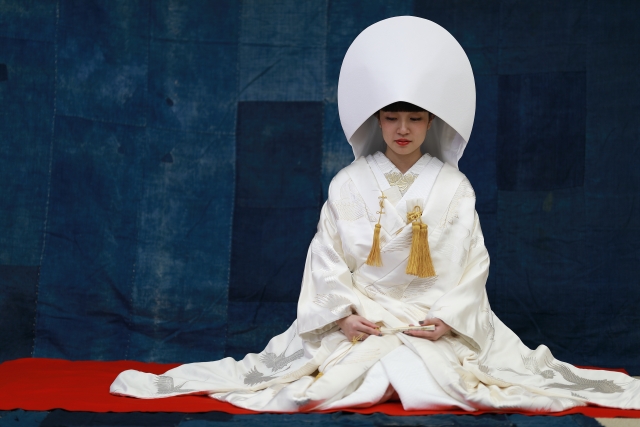
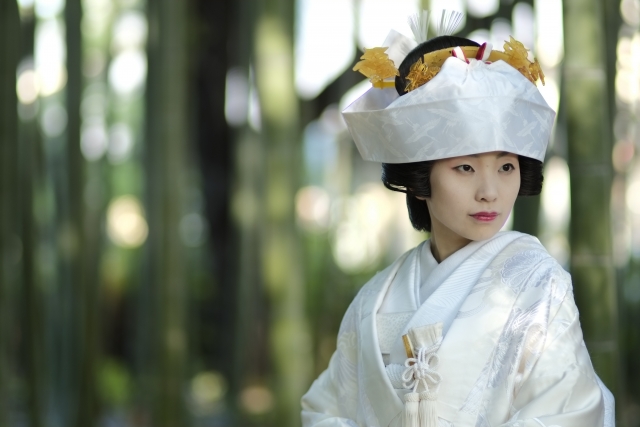
The groom wears kimono, hakama (trousers), and haori (overcoat), which are usually black or gray and has his family’s symbol embroidered on it.
Usually the bride and sometimes also the groom change their outfit several times during the wedding ceremony and the wedding party. The tradition of changing clothes several times is originated in the 14th century and symbolizes the bride’s readiness to be a new member of the groom’s family.
At a Shinto wedding, the bride will attend the ceremony in a long white kimono called “shiromuku”. Then she may come to the reception in a colorful, embroidered kimono called “uchikake”, then change into a Western-style evening gown or a party dress.
If a couple has a Western-style wedding, the bride gets married in a white wedding gown, then changes into a colorful evening gown or party dress at least once, sometimes twice.
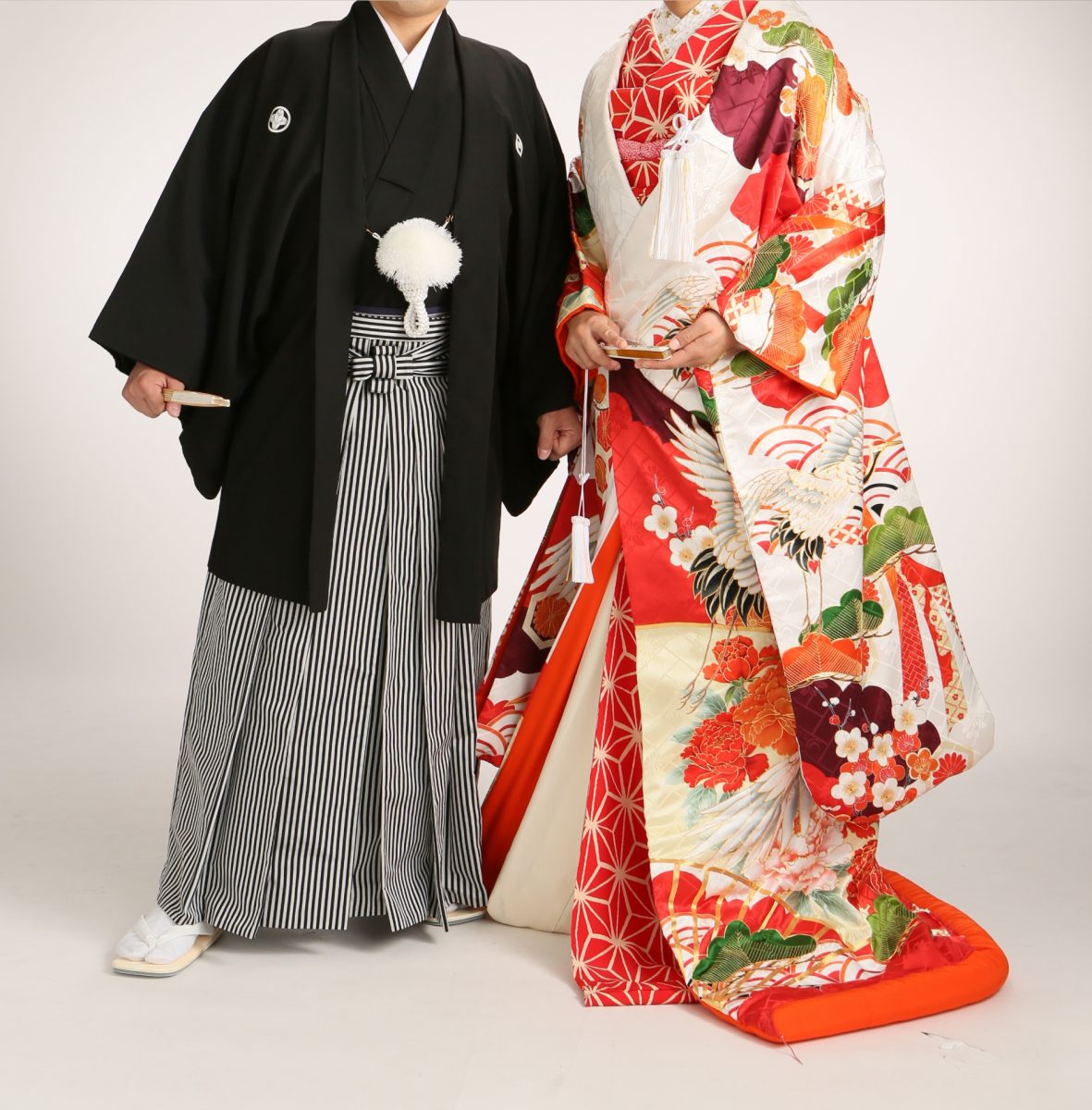
For both western and traditional styles of wedding ceremonies, many mothers of the bride and groom wear black kimono with the family’s symbol embroidered on it. The fathers of the bride and groom usually wear tuxedos.
Most of the guests wear formal western style clothes for the wedding ceremony and the party, such as party dresses for women and suits for men. Some women choose to wear kimono especially if the wedding ceremony is in Japanese style.
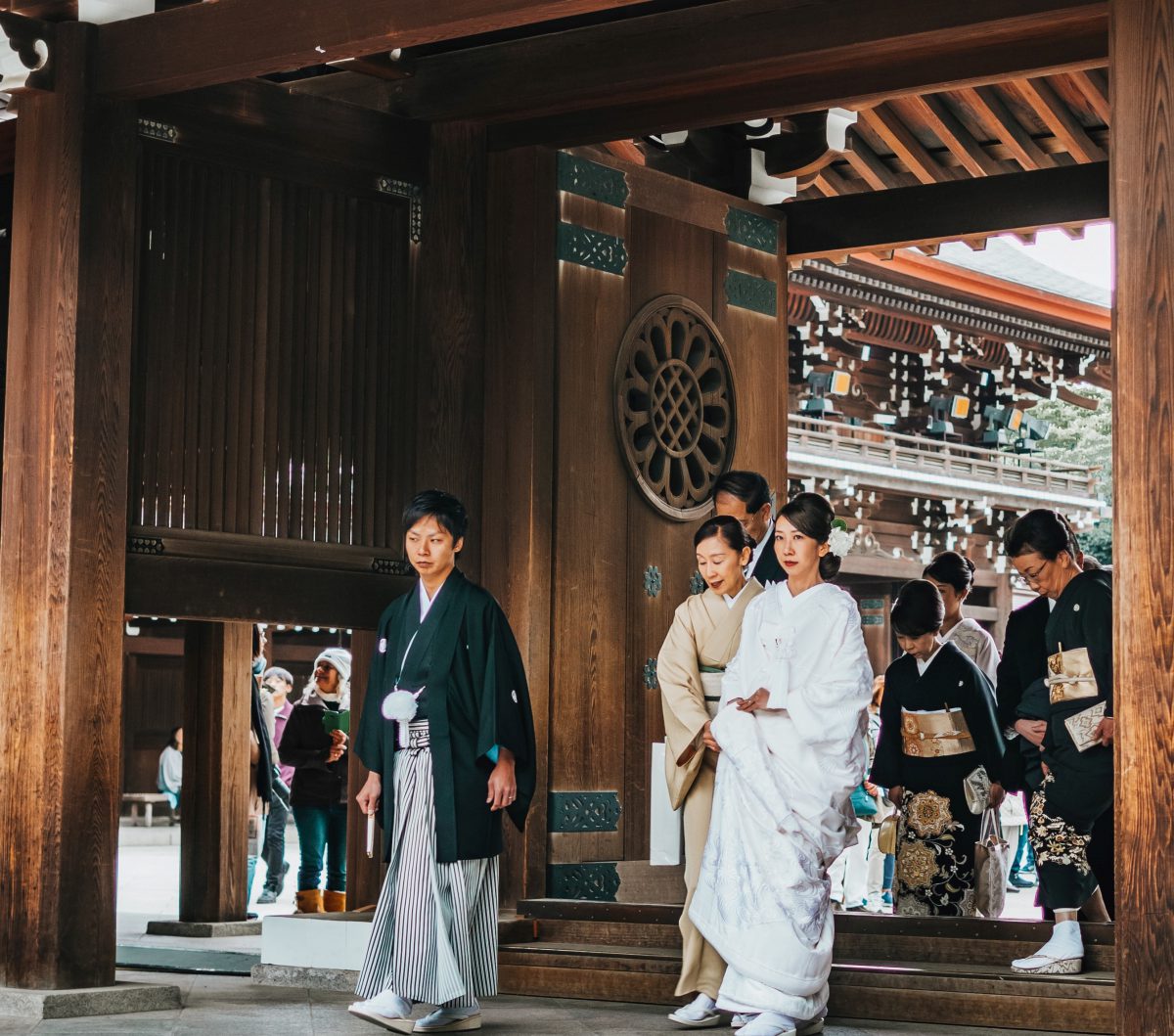

Speaking of Kimono, have you ever tried wearing one yourself? You might need one if you ever want to attend a formal Japanese event like this, or if you want to explore Japan in a fun and traditional way. Did you know that one of the most popular ways of wearing kimono is through a rental? Even for formal events such as weddings, there are options available that are both fashionable and fitting for the event. Or, if you’d rather skip the formalities and enjoy a more casual experience, we have you covered there too.
Wedding gifts
One of the unique traditions of the wedding in Japan is that the guests give a gift of money to the groom and bride. There are elaborately decorated envelopes especially designed for wedding money gifts. These envelopes can be found in every convenience store or even 100 yen shop. Make sure that you do not buy the wrong one such as for the funerals. The wedding gifts start at ¥10,000, and can be ¥30,000, ¥50,000 or ¥100,000, depending on the relationship of the guest and families. The guests usually do not bring store-bought gifts.
It is usually the guests who receive take-home gifts at the wedding. The gifts from the couple to the wedding guests are called “hikidemono”. This is an old tradition that used to mean to display the family’s wealth. The gifts often include tableware, baked goods, and their own selection from a catalogue.

Wedding invitations
Prior to the wedding ceremony and party, the guests receive an invitation normally by postal mail. In the envelope, the postcard can be found to reply whether you are going to attend or not, and the guests are expected to answer to the invitation within a certain timeframe. Filling out the postcard in the correct manner is sometimes tricky even for Japanese. There are surprisingly many rules about it! You can search on the Internet, and you will be able to find a step-by-step guide on how to correctly fill out the wedding invitation.
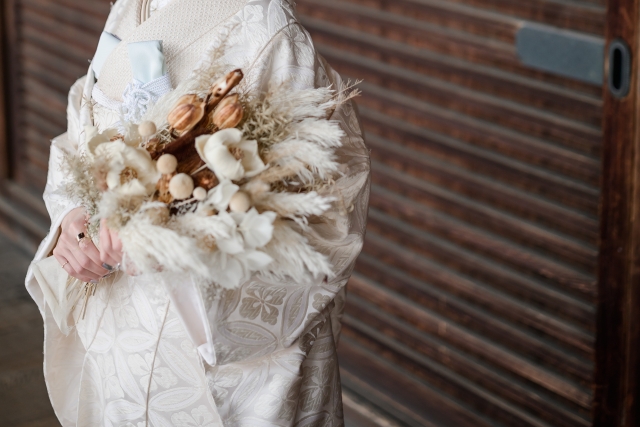

We introduced the basics of Japanese wedding ceremonies and reception parties. Even if you do not have a chance to attend the wedding ceremony and party in Japan, you may have a chance to get a glimpse of the Japanese traditional wedding ceremony in one of the Shitno shrines such as Meiji Shrine in Harajuku, Tokyo.
Follow us on Instagram or Facebook for more travel inspiration. Or tag us to get featured!
Happy travelling!
Stay informed of the best travel tips to Japan, the most exciting things to do and see, and the top experiences to have with the Japan Wonder Travel Newsletter. Every week we will introduce you to our latest content.
Other articles you might like





